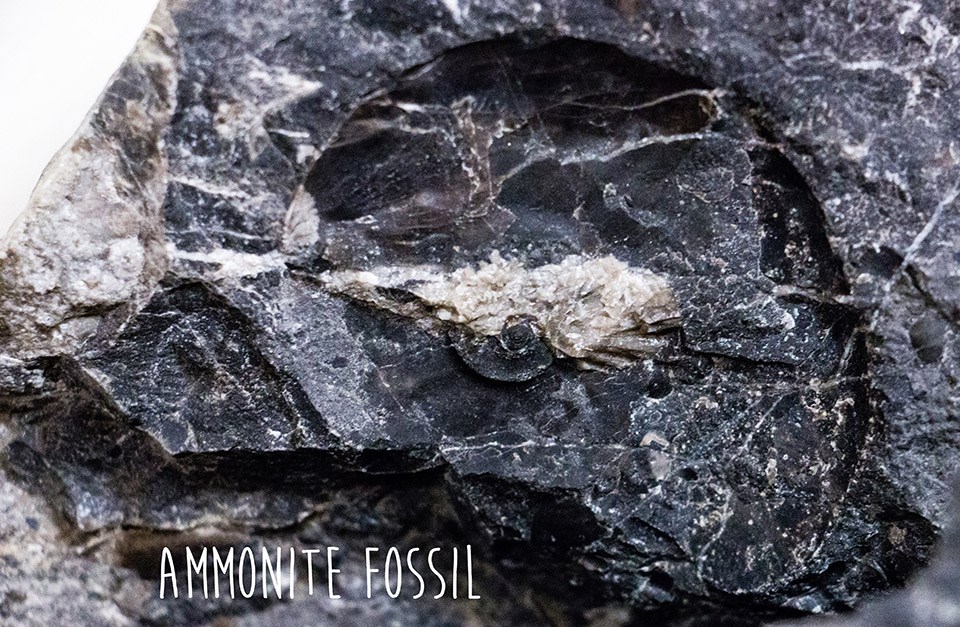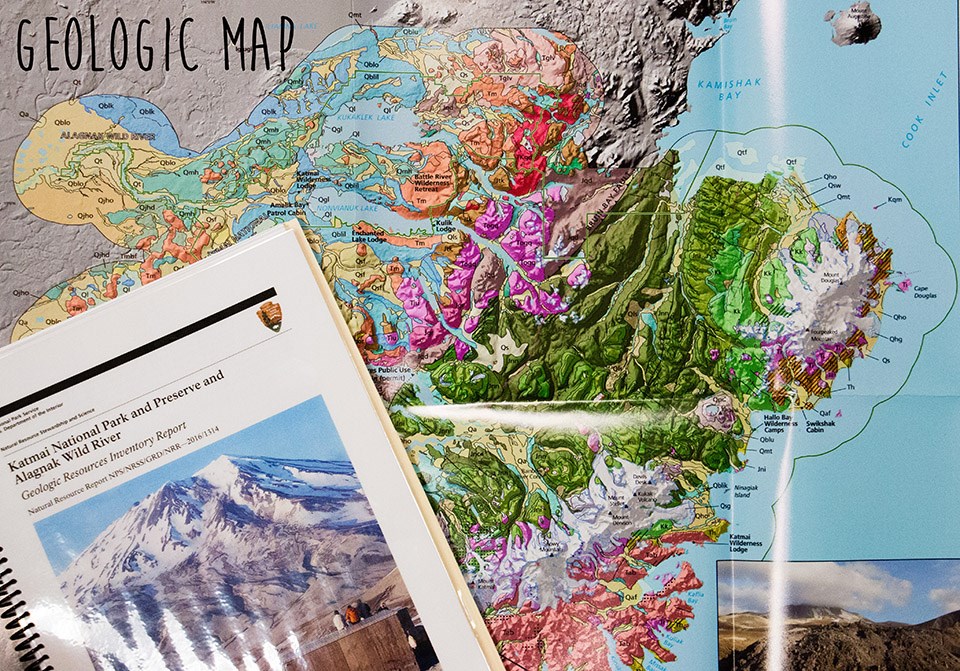Last updated: March 8, 2018
Article
#Sciencedeskdigs: Ammonite Fossil

NPS Photo/ M.Reed
What is it?
This is an ammonite fossil. Ammonites are essentially squids with shells who lived abundantly in the ocean at the same time as dinosaurs in the Mesozoic Era. They are now extinct. Their living relatives are octopus, squid, cuttlefish, and, more distantly, nautilus. They are really cool because they have such a spectacular diversity. You can find some the size of your hand or as big as a desk—and that is not including the tentacles! Some have coiled shells like this one or uncoiled (that look like party hats) or have spiky, ridged, or smooth shells. This one was collected in southern Colorado nearly 18 years ago on a field camp during my undergraduate studies.
I got really lucky throughout my education to having amazing geology teachers who shared their passion for earth science and made the big concepts of science seem tangible by using hands on learning. I’ve had a rock collection since I was old enough to pick up rocks but I didn’t really get excited about fossils and paleontology until college. For that I have to thank Dr. Tom Holtz at the University of Maryland. He was—and still is— one of those professors who has an absolutely infectious love for what they do. That inspired me to want to work with fossils and learn how to tell their stories to others.
That’s what is really awesome about fossils. Each one has so many layers or chapters to its stories like What is it? How did it go about its daily life? How did it mate or capture food? What kind of environment did it die in? How did it die? How did it become a fossil? What happened after fossilization? Who discovered it? Why were they looking for fossils? Where is the fossil now? These all add interest to the specimen and help tell the story of the past on many different time scales.

NPS Photo/ M.Reed
